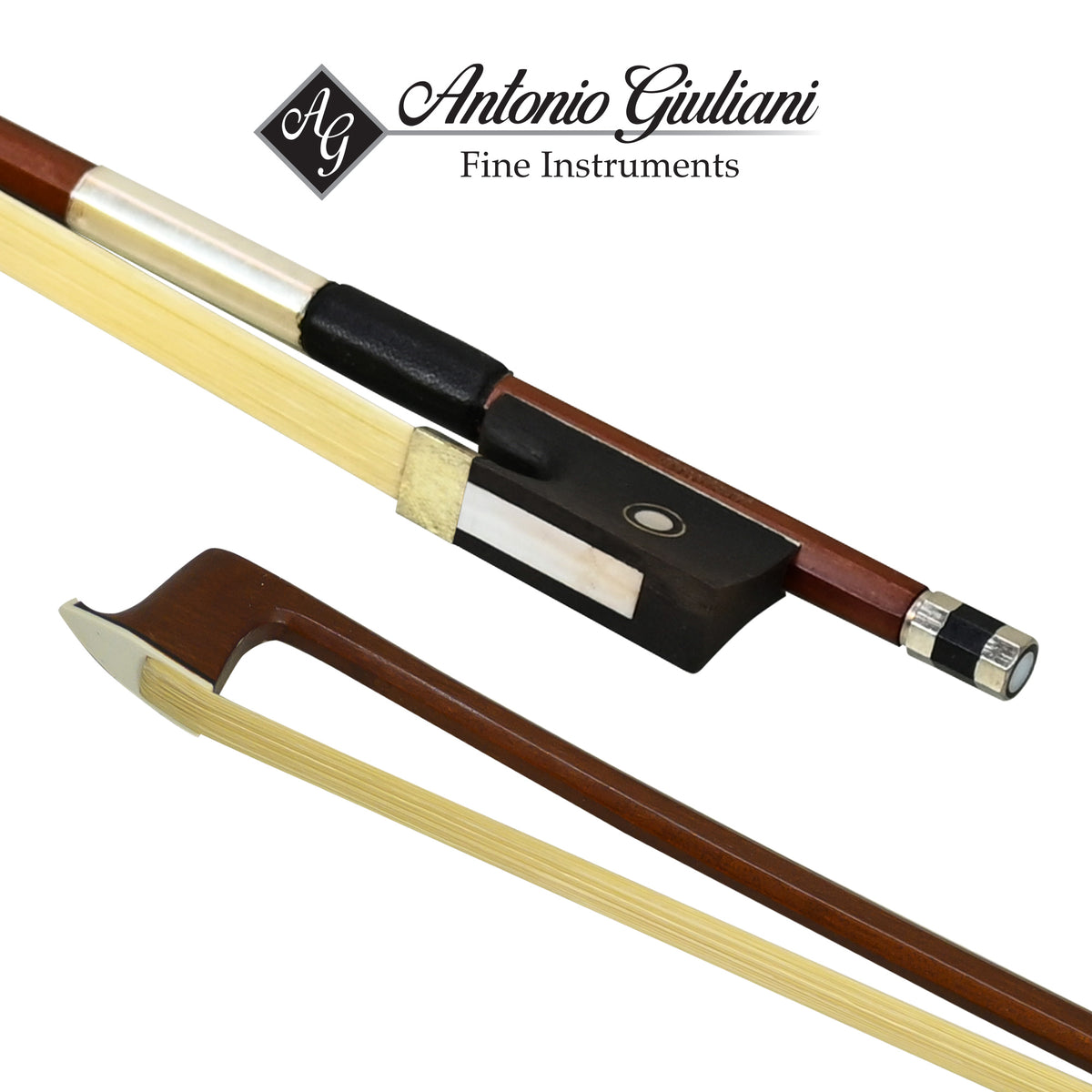What is a Violin Bow Made Out Of?

The violin bow is an intricate and essential component of the violin, often overlooked but never underappreciated. As the owner of Kennedy Violins, I have had the privilege of working with numerous violinists, each with their unique style and sound. The violin bow, a seemingly simple tool, plays a vital role in shaping the tone, expression, and overall music-making experience.

Parts of a Violin Bow
-
Stick: The stick of the bow is usually made out of wood or carbon fiber. Wood options include:
-
Pernambuco: The heartwood of the Pernambuco tree is used, which is very strong and dense.
-
Snakewood: A type of exotic wood that is often used for wooden bows.
-
Brazilwood: The outer ring of the paubrasilia echinata tree.
-
Bow hair: The bow hair is usually made from horse hair, but some luthiers also use synthetic materials.
-
Frog: The frog is usually made from ebony.
-
Tip: The tip plate can be made from nickel, silver, ivory or gold.
-
Winding: The winding is the wrapping located right above the grip. It helps add weight to the bow, which in turn adjusts the balance point. The winding can be made from wire (nickel, silver, gold), faux whalebone, or silk.
The Evolution of Violin Bow Materials
The violin bow has undergone significant transformations over the centuries, with various materials being used to craft this essential instrument. From the early days of archery-inspired bows to the modern, precision-crafted bows of today, the evolution of materials has been shaped by the pursuit of perfecting tone, playability, and aesthetics.
Traditional Materials
-
Wood: The earliest violin bows were crafted from wood, with the most prized being Pernambuco, a dense, resonant wood from Brazil. Pernambuco remains a popular choice among luthiers due to its unique properties, which produce a rich, warm tone.
-
Horsehair: The use of horsehair for the bow's strings dates back to the 17th century. Sourced from the tails of horses, this material provides the necessary friction and responsiveness for optimal sound production.
Modern Innovations

-
Fiberglass and Carbon Fiber: The introduction of fiberglass and carbon fiber bows has revolutionized the industry, offering durability, consistency, and affordability. These materials have made high-quality bows accessible to a wider range of musicians.
-
Synthetic Horsehair: Recent advancements in synthetic materials have led to the development of high-performance, weather-resistant horsehair alternatives. These innovative materials offer improved durability and reduced maintenance.
The Craftsmanship Behind a Violin Bow
The art of crafting a violin bow is a testament to human ingenuity and dedication. Luthiers, skilled artisans with a deep understanding of materials and sound production, invest countless hours in shaping, carving, and perfecting each bow.
The Process
-
Selecting the Wood: Luthiers carefully choose the finest woods, considering factors such as grain pattern, density, and resonance.
-
Shaping and Carving: The wood is meticulously shaped and carved to precise dimensions, ensuring optimal weight, balance, and playability.
-
Horsehair Installation: The horsehair is carefully stretched, wound, and secured to the bow, requiring great precision and patience.
-
Final Touches: The bow is polished, assembled, and tested to ensure exceptional tone and performance.
The Sound of Perfection
A well-crafted violin bow is more than just a tool; it's an extension of the musician's voice. The perfect bow can elevate a performance, adding depth, nuance, and emotion to the music.
The Tonewood Connection
The violin bow's material and craftsmanship have a profound impact on the tone produced. The right bow can bring out the full potential of the instrument, much like a masterful painter brings out the beauty of their canvas.
Best Violin Bows for Professionals

-
Rich, warm tone: Pernambuco wood and high-quality horsehair ensure a rich, warm sound with excellent projection.
-
Excellent playability: Precise craftsmanship and balanced design make for effortless playing and nuanced expression.
-
Durability: High-quality materials and expert construction ensure a long lifespan with minimal maintenance.
Conclusion
The art and craft of violin bow-making have a rich history rooted in tradition and innovation. Each bow is a masterpiece that brings the music to life through its unique blend of materials and craftsmanship. The violin bow is a testament to the human spirit's capacity for creativity, precision, and beauty. As we continue to push the boundaries of innovation, we honor the legacy of the past while shaping the music of the future.
















